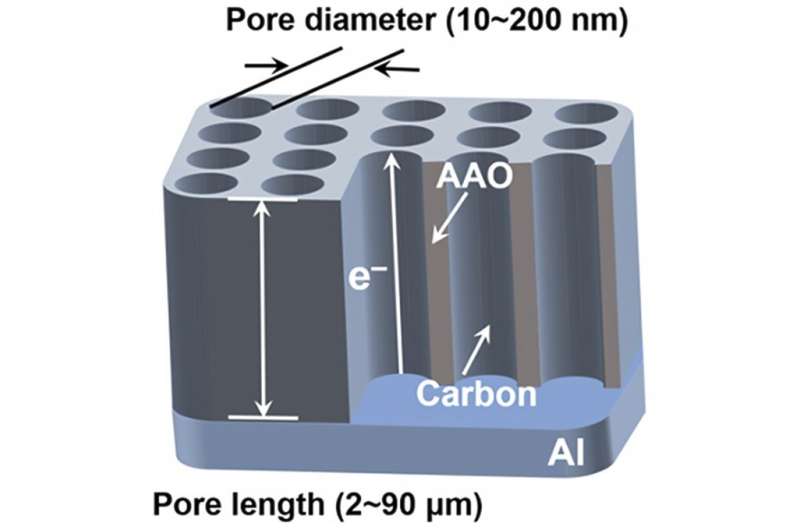Phys.org June 2, 2023
Researchers in Japan have fabricated the next-generation membrane electrodes for fundamental electrochemical research of amorphous-based porous carbon materials by the uniform carbon coating of anodic aluminum oxide formed on an Al substrate and free from a barrier layer. The conformally carbon-coated layer formed vertically aligned giant carbon nanotubes, and their walls comprised low-crystalline stacked graphene sheets. The diameter and the length of the nanopores could be tuned over a broad range of between 10 to 200 nm and 2 to 90 µm, respectively. Unlike composite electrodes made from other ordered nanoporous carbons, this model electrode exhibited an absence of inter-particle spacing and hence no contact resistance between particles. The model electrode provides representative nanopores of low-crystalline carbon materials. An atomic-scale structural model of the low-crystalline carbon walls enabled theoretical simulations to be performed. Using this model electrode, the electrical conductivity of low-crystalline carbon walls and mass transportation in an electric double-layer system were elucidated. The researchers expect the model electrode to help clarify the complex electrochemical processes in porous carbon electrodes… read more. TECHNICAL ARTICLE

Model membrane electrode showing a wide range of controllability on the pore dimensions. Credit: Tohoku University